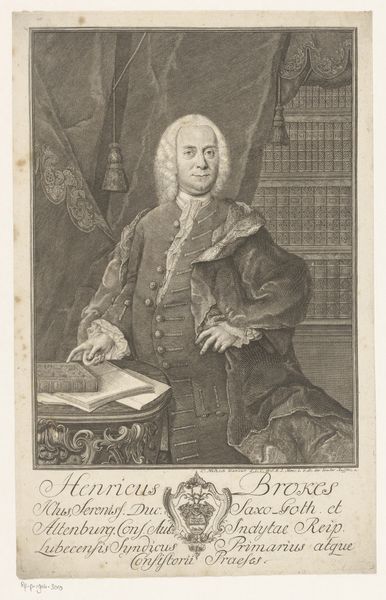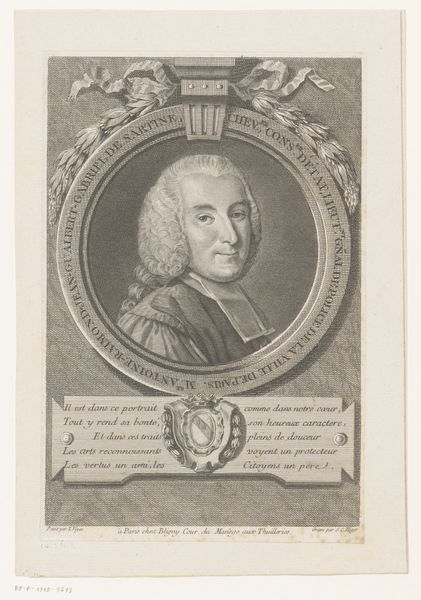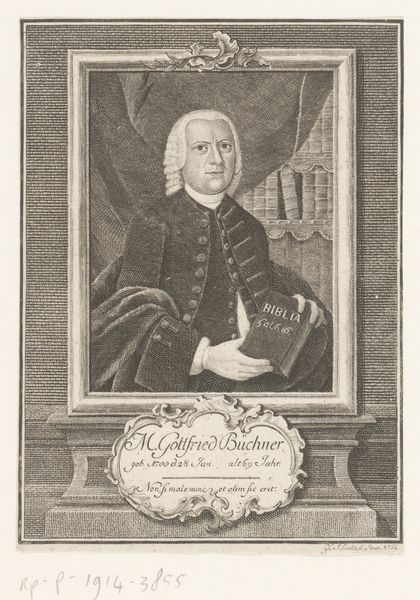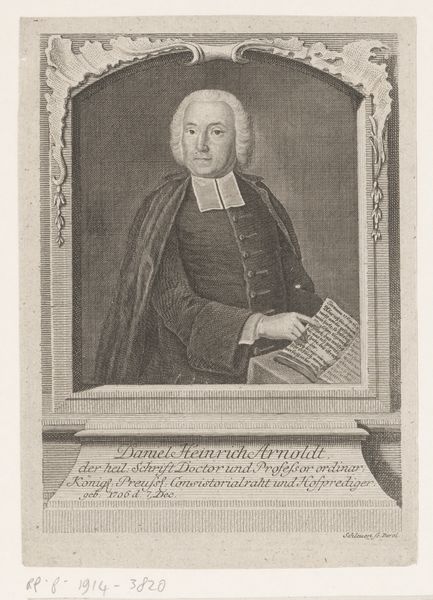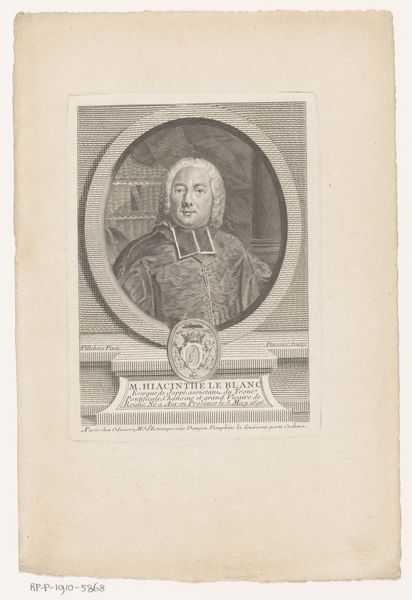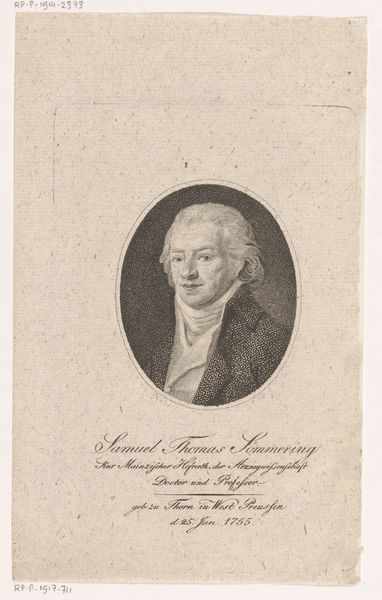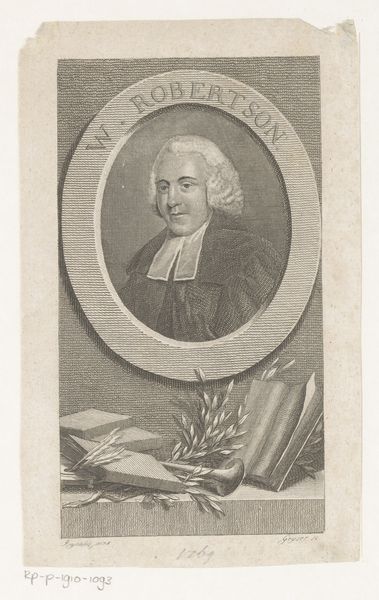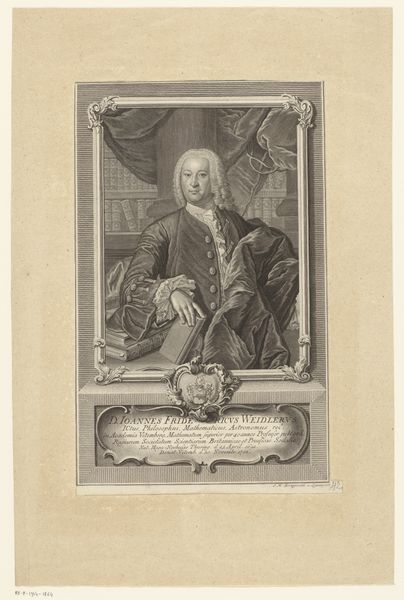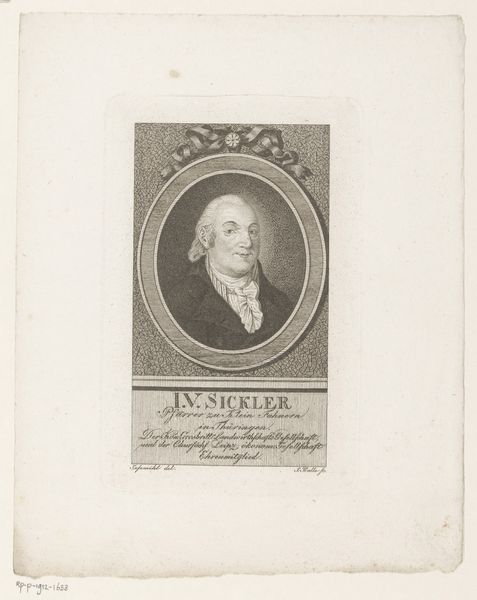
Portret van Johann August Unzer op 42-jarige leeftijd 1768
0:00
0:00
Dimensions: height 181 mm, width 107 mm
Copyright: Rijks Museum: Open Domain
Curator: This is a 1768 engraving by Johann Christian Gottfried Fritzsch. It's a portrait of Johann August Unzer at the age of 42. Editor: My initial reaction is how still it feels. It has a restrained energy. It’s not dynamic but intensely focused. It appears very cerebral. Curator: Precisely! Unzer was a notable physician and philosopher. These portraits were often commissioned by academics, as they were useful in solidifying social status through institutional connections, thus furthering their reputation. Editor: It's interesting how the details become a key to his profession—like that stack of books and elaborate robe. As an engraving, the materiality inherently becomes one of reproduction and distribution of his likeness and ideas, wouldn’t you agree? Curator: Absolutely. The medium lent itself to wider circulation within intellectual circles. Prints like this played a role in building Unzer's public image. Look how the engraver detailed the texture of the lace at the cuff and jabot of his shirt, emphasizing his standing in society. It almost seems like visual marketing! Editor: The fine lines showcase tremendous craft, from the face’s modeling to the complex rendering of the clothing. You sense the laborious hand involved, which counters the print’s ultimate purpose of dissemination. A constant tension between production and intent. Curator: That contrast is crucial. Think of this as pre-photography. It speaks to the societal importance placed upon representation of individuals like Unzer. Also consider how, even within Baroque portraiture, the Dutch tradition had its own restraint of overt emotion—a bit more demure than say, a French portrait of the same period. Editor: Yes, while ornate in its particulars, the image pulls back. It maintains a specific level of decorum that reflects the social values. He’s not overtly romanticized; we observe an intellectual presented in a professional setting. Curator: Indeed. Portraits like these served a function in reinforcing hierarchical structures. They’re about projecting a certain persona to a select group, reinforcing privilege and class. Editor: Considering all its elements, it reveals how portraiture functioned as both an artistic representation and a constructed marker of social position. It brings new perspective. Curator: A worthy reflection, it leaves one to consider the impact and implication this art had.
Comments
No comments
Be the first to comment and join the conversation on the ultimate creative platform.

